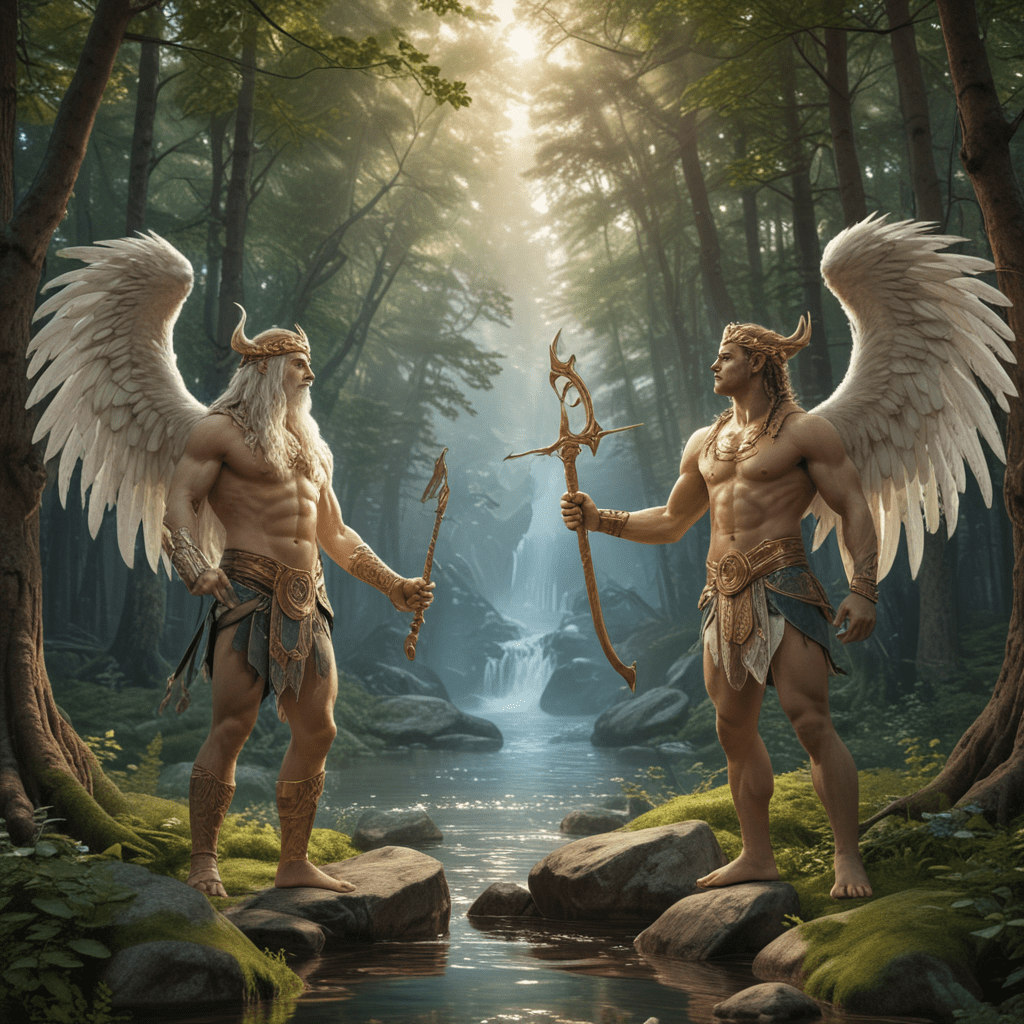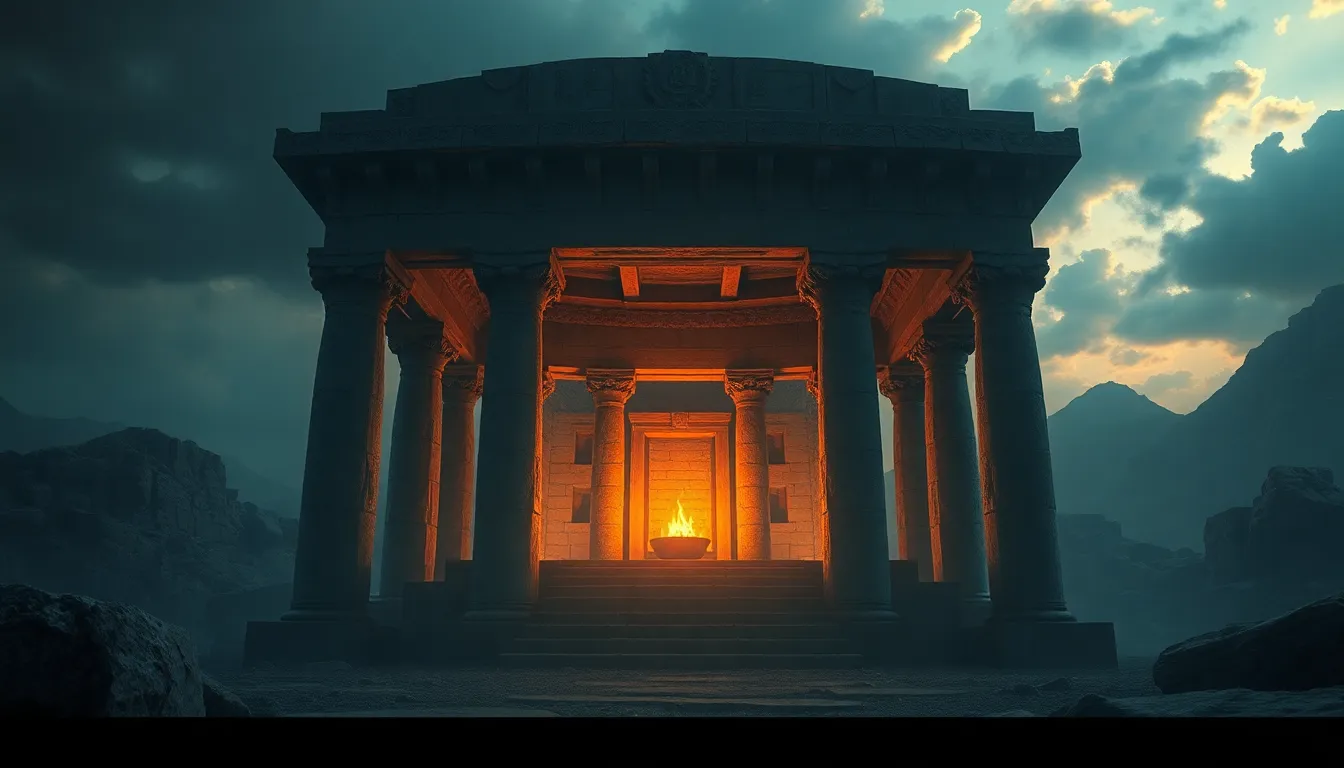Ancient Deities and Their Connection to the Universe: A Mythological Exploration
I. Introduction
Deities in ancient cultures served as powerful symbols representing the forces of nature, human emotions, and cosmic phenomena. These gods and goddesses were not merely fictional characters; they were integral to the societal and cultural frameworks of their times. Mythology, therefore, plays a crucial role in understanding how ancient peoples perceived the universe and their place within it.
This article aims to explore the connection between ancient deities and the universe, examining their roles in various cultures, the creation myths that shaped cosmic understanding, and the enduring influence of these beliefs on contemporary cosmology.
II. The Role of Deities in Ancient Societies
Deities were central to the belief systems of ancient societies, acting as representations of natural forces and elements. Through these gods, cultures expressed their understanding of the world around them.
- Deities as representations of natural forces: Many ancient gods personified elements such as the wind, the sea, and the earth. For example, Poseidon in Greek mythology ruled over the oceans, while the Egyptian goddess Nut embodied the sky.
- The influence of deities on daily life and culture: Rituals, festivals, and practices were often dedicated to appeasing these gods, reflecting their significance in agricultural cycles, weather patterns, and seasonal changes.
- Myths as a means of explaining cosmic phenomena: Myths often provided explanations for celestial events, such as eclipses and the changing seasons, giving context to the mysteries of the universe.
III. Creation Myths and Cosmic Order
Creation myths from various cultures reveal much about how ancient peoples understood the origins of the universe and the order within it. These narratives often highlight the relationship between deities and the cosmos.
Overview of creation myths from various cultures
- Mesopotamian creation stories: The Enuma Elish details how the god Marduk created the world from the body of the goddess Tiamat, establishing order from chaos.
- Egyptian creation myths: The Heliopolitan creation myth tells how the god Atum created himself and then produced other gods, illustrating a structured divine hierarchy.
- Hindu cosmology: In Hindu belief, the universe goes through cycles of creation and destruction, governed by the trinity of Brahma (the creator), Vishnu (the preserver), and Shiva (the destroyer).
These myths share thematic connections related to the structure and order of the universe, often portraying a transition from chaos to harmony, underscoring the belief that the cosmos operates under divine principles.
IV. Celestial Deities: Gods of the Sky and Stars
Sky gods and celestial deities are prominent in many mythologies, reflecting humanity’s fascination with the cosmos.
Examination of sky gods across cultures
- Greek: Zeus, the king of the gods, wielded thunder and lightning, while Uranus represented the sky itself.
- Egyptian: Horus, the sky god, was often depicted as a falcon, symbolizing protection and kingship, and Ra, the sun god, represented life and light.
- Native American: Many tribes revered the Great Spirit, a celestial entity embodying the universe’s life force and creation.
The significance of celestial bodies in mythology is profound, as they often serve as markers for time, seasons, and agricultural practices, deeply influencing cultural developments.
V. Elemental Deities and Natural Forces
Elemental deities symbolize the fundamental forces of nature, illustrating humanity’s connection to the environment.
The role of deities associated with earth, water, fire, and air
These gods are often invoked for protection, blessings, and understanding of natural phenomena.
Case studies of elemental gods
- Greek: Poseidon, the god of the sea, and Hephaestus, the god of fire and craftsmanship, demonstrate the significance of water and fire in ancient Greek culture.
- Norse: Njord, the god of the sea and winds, and Thor, the god of thunder, illustrate the power of natural elements in Norse mythology.
These elemental deities emphasize the interconnectedness of nature and the universe, serving as reminders of the balance required to maintain harmony in the world.
VI. Deities of Time and Space
Time and space are fundamental concepts in understanding the universe, and various cultures have personified these elements through their deities.
Exploration of gods associated with time and eternity
- Chronos in Greek mythology: Often depicted as an old man, Chronos symbolizes the relentless passage of time.
- Shiva in Hindu belief: Representing both destruction and regeneration, Shiva embodies the cyclical nature of time and the universe.
The philosophical implications of time as a cosmic element are profound, raising questions about existence, causality, and the nature of reality itself.
VII. Myths of the Underworld and Afterlife
The underworld is a common theme in many mythologies, representing the unknown and the mysteries of life after death.
The concept of the underworld in various mythologies
- Greek: Hades rules the underworld, where souls reside, and the River Styx serves as a boundary between the living and the dead.
- Egyptian: Osiris, the god of the afterlife, presides over the Duat, guiding souls through the challenges of the afterlife.
These narratives connect to cosmic cycles, illustrating themes of rebirth, transformation, and the eternal nature of the universe.
VIII. The Influence of Ancient Deities on Modern Cosmology
Ancient beliefs and mythologies continue to influence contemporary understandings of the cosmos and scientific exploration.
- How ancient beliefs have shaped contemporary understanding of the cosmos: Many modern scientific concepts echo ancient ideas, such as the cyclical nature of the universe seen in Hindu cosmology.
- The resurgence of interest in mythology in modern science: As scientists seek to understand the universe, they often turn to mythological narratives for inspiration and insight.
- Comparative analysis of mythological narratives: Analyzing ancient myths alongside modern scientific theories can reveal deep-seated human questions about existence and the nature of reality.
In conclusion, the exploration of ancient deities and their connection to the universe provides valuable insights into how various cultures understood their world. These myths continue to resonate in contemporary discourse, highlighting the timeless nature of humanity’s quest for knowledge and meaning in the cosmos.



